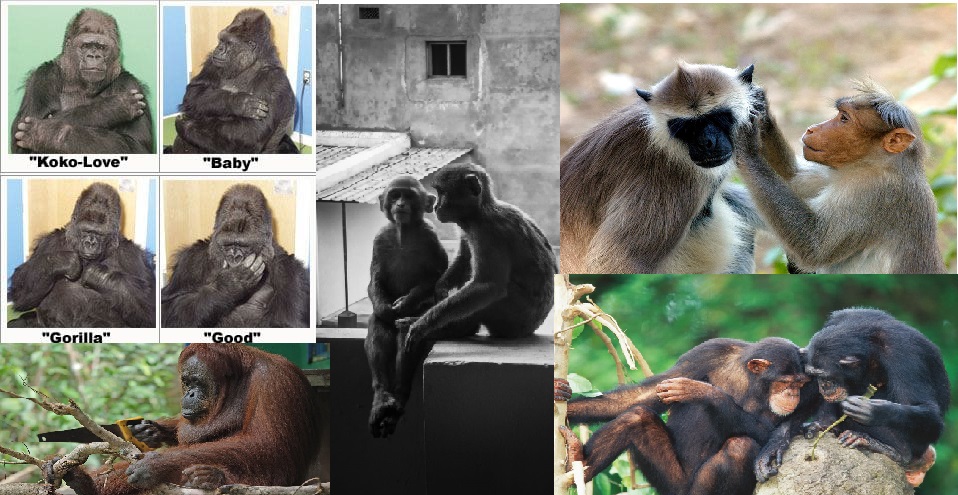Our Cousins
Posted on October 31, 2021 • 4 minutes • 691 words
Millions of years ago, we bid adieu to them, choose our paths. Nature molded us in such a way that we all are different and yet the same. We and our cousins: apes, monkeys, lemurs, lorises, and tarsiers belong to an order called primates. We have things that are common in both of us but expressed differently. Dear readers, what makes us different from them? What makes us similar to them? Let us explore!
##Communication
We primates prefer to live in a group. Living in a group requires effective communication to interact with each other. Human communication is open (talking and thinking about new ideas) and discrete (words used in a sentence are different). Some of our cousins can talk only about the present and can show their emotional and psychological state to others- for example, in apes, a combination of outstretched hands and pleading face means an appeal for sharing food. This behavior indicates that the particular individual is of low status in the society.
They use odors, sounds, visual messages, and touch to communicate with others. We build walls to mark our territory, and they use pheromones to mark their territories. Less investment indeed!. Pheromones also play a crucial role in attracting the opposite sex.
Both humans and non-human primates use agonistic displays to threaten or intimidate others. When angry with a member, Baboons flash their eyelids. If this is not sufficient, they open their mouth so wide as if they are yawning- this is the last warning before an attack.
You would have seen monkeys and apes sitting close to each other, grooming each other (allogrooming). This is called affiliative behavior found in all primates. Allogrooming has both social and physiological benefits. It strengthens the bond between each other and releases endorphins- stress and pain reliever in the blood.
##Cognition
Koko, a famous gorilla understood nouns, verbs, adjectives, abstract concepts like good, bad, and love. She could construct her sentence using American Sign Language. Apes and some monkeys can make tools to acquire food from sources like termite mounds for termites and trees for honey. You all will be amazed by knowing that chimpanzees can have efficient working memory than humans.
##Culture
A simple definition of culture is the way we do things. According to the Jourdain hypothesis, apes express their culture without knowing it because of cognitive limitations. Only humans have a cumulative culture- building on or improving the cultures left by our predecessors.
Behavior is passed down the generations; a famous example is that of Japanese macaques. They found that removing sand from sweet potatoes makes it more palatable. This discovery got carried across the groups and down the generations.
##Sexuality
In human females, permanent secondary sexual characteristics (SSC) develop after the onset of puberty. SSC in non-human primates is not permanent, develops only during ovulatory phases. It includes coloration and perineal swelling.
SSC attracts the males towards the females. This ensures that they have a high probability to produce offspring. Both the sexes produce pheromones. Some visual signs also attract a particular mate; for example, female rhesus chooses males by paying attention to the face. Male Japanese macaques prefer females with intense red color and contrasting faces.
##Morality
Empathy, learning ability and following social rules, reciprocity, and peacemaking forms the basis of sociality. All of these are present in apes. Dr. De Waal’s research has shown that consolation after a fight is very common among great apes and not in monkeys. Females play a crucial role in bringing peace to the community by negotiating between the rivals. Research shows that they know their desires, others’ beliefs, and are sensitive to the needs of others. Rules are required for smooth functioning of a society. Members who break the rules get punishment. Altruism is seen in many primates. In a test, chimps were seen passing sticks to a person who was unable to reach it without any expectations of reward.
Thank you for reading till here. This article was co-authored by another friend of mine, Sai Adarsh. I thank him for his time to add some valuable points and correct the manuscript for semantic and grammatical errors
